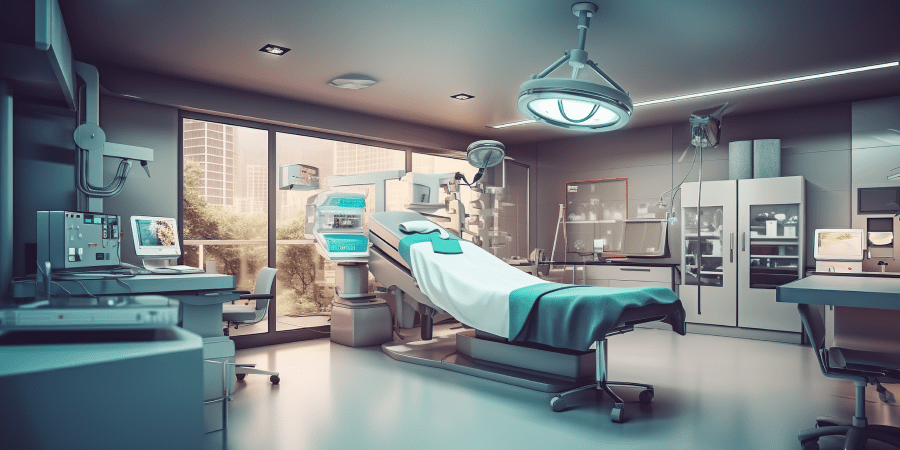In today’s world, we’re all looking for ways to be...
The realm of healthcare is undergoing a profound transformation, not only in medical treatments and technologies but also in the very spaces where healing takes place. As the emphasis on patient-centered care, technological integration, and holistic well-being grows, so does the need for innovative hospital design. Architects and healthcare professionals are joining forces to reimagine hospital spaces, giving rise to an exciting era of architectural concepts that prioritize both functional excellence and human-centric experiences.
In this article, we embark on a captivating journey through the latest innovations in hospital design, delving into the remarkable architectural concepts that are reshaping the healthcare infrastructure of today and tomorrow. By delving into these architectural innovations, we gain a glimpse into a future where healthcare environments are not only spaces of medical treatment but also nurturing havens that foster healing and well-being for all who enter.
Latest Innovations in Hospital Design
Technology developments, shifting healthcare requirements, and a rising emphasis on patient-centered care are all driving a surge of innovation in the field of hospital architecture. Here are some of the most important recent developments in hospital architecture that are influencing how healthcare facilities will be built in the future:
1. Patient-Centered Design
One of the most notable changes in hospital design is the emphasis on patient-centered rooms that prioritize comfort, privacy, and emotional well-being. The disinfectant and impersonal hospital rooms of the past have given way to warm and inviting surroundings that integrate natural light, soothing hues, and tranquil artwork. Private rooms with large windows not only boost patient morale but also assist recovery by boosting circadian cycles and minimizing stress. Patient-Centered Design not only increases patients’ sense of empowerment and involvement, but it also empowers healthcare workers.
2. Biophilic Design
Recognizing the inherent human connection to nature, the concept of biophilic design is gaining popularity in healthcare architecture. Green spaces, indoor gardens, and vistas of natural landscapes are being incorporated into hospitals to generate a sense of calm and reduce tension. These components not only assist patients but also employees and visitors, leading to a healing environment overall. This holistic biophilic design approach not only increases the visual dimension of healthcare settings but also encompasses a visible representation of the symbiotic relationship between nature and the human spirit.
3. Flexible Adaptable Spaces
Spaces that can adjust to shifting needs are required due to the unpredictable nature of the healthcare industry. Modular layouts, movable walls, and multipurpose rooms are all features of contemporary hospital designs that incorporate adaptability. This orchestration of adaptability acts as a conduit for amplifying efficiency and outlining a path toward the optimization of operational flow and resource allocation. Flexible layouts not only increase productivity but also enable quick changes to match new medical advancements or changing patient groups.
4. Technology Integration
Advanced technology is transforming hospital operations and patient care. Smart hospitals include cutting-edge systems such as telemedicine, real-time patient monitoring, and robotic medication dispensing. With characteristics such as modern wiring systems, strategically located power outlets, and data-rich infrastructure, architectural design facilitates the smooth integration of these technologies. Furthermore, real-time patient monitoring, a technological achievement that keeps a finger on the pulse of a patient’s health, acts as a digital sentinel, protecting against any deviations in health metrics.
5. Infection Control Sustainability
New trends in hospital architecture that prioritize sustainability and infection control signal a new age in medical facilities. Modern infection control techniques help to dramatically lower the danger of pathogen transmission, protecting both the patients’ and healthcare workers’ health. This not only promotes a safer atmosphere for healing but also increases public trust in the healthcare system as a whole. Concurrently, the use of sustainability concepts, such as the use of eco-friendly materials, renewable energy sources, and energy-efficient lighting. As a result, operating costs reduce and healthcare aligns with the international duty of environmental stewardship.
6. Wayfinding Patient Navigation
Wayfinding and patient navigation are growing as critical components of modern hospital design. Hospitals can lower the stress and uncertainty associated with big and complicated healthcare facilities by deliberately incorporating intuitive signage, clear visual cues, and digital mapping technology. An efficient wayfinding system guarantees that everyone can simply navigate the facility, decreasing delays, and anxiety, and enhancing overall satisfaction. Furthermore, patient navigation systems go beyond physical signage, providing digital tools that deliver real-time directions and information via cell phones or interactive kiosks. This harmonic blend of physical and digital assistance not only enables users to effortlessly find their way, but it also streamlines processes.
7. Collaboration Spaces
Modern healthcare is a team effort including a variety of medical specialists. Hospital design is responding to this reality by building environments that promote teamwork and interdisciplinary collaboration. To enhance contact and knowledge exchange, shared workstations, lounge areas, and meeting rooms are strategically arranged. Collaboration spaces also bridge the gap between research and practice, enabling real-time conversations and consultations that can lead to game-changing advances in medical treatment and patient outcomes. Collaboration spaces not only improve treatment quality but also foster a culture of constant learning and innovation within the healthcare ecosystem.
Wrapping Up
Hospital design innovations are making medical facilities more patient-centric, productive, and technologically cutting-edge. In addition to boosting patient outcomes, these architectural ideas are also enhancing the health of the medical staff, visitors, and the larger community. As these trends gain momentum across the globe, healthcare architects in India are well-positioned to make use of them to improve the country’s healthcare infrastructure and usher in a new era of cutting-edge, patient-centered medical facilities.










